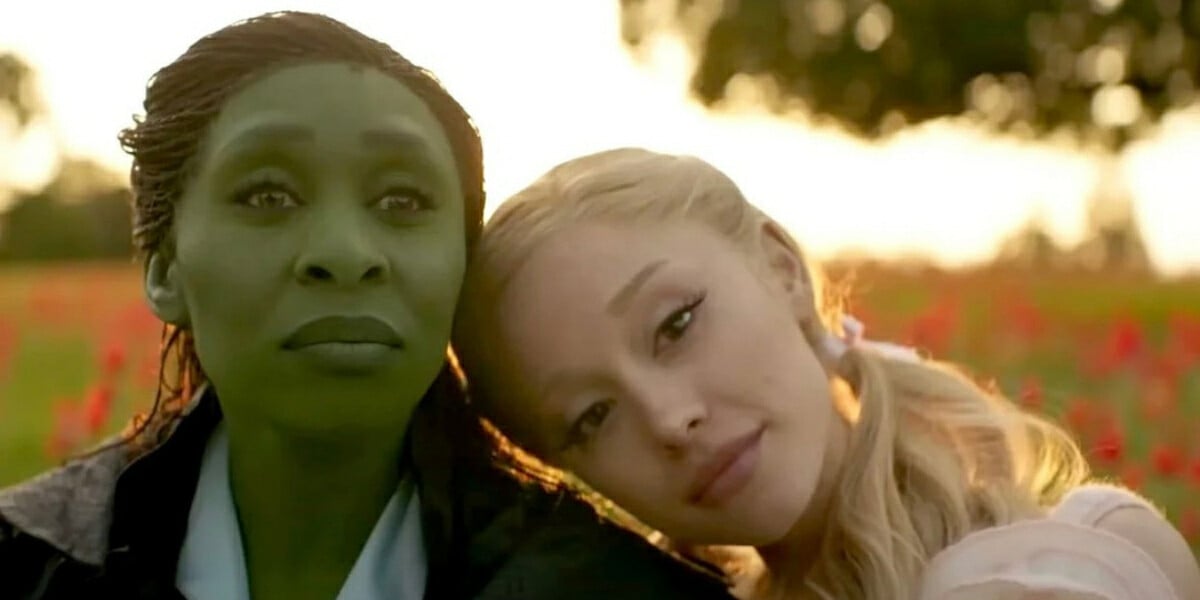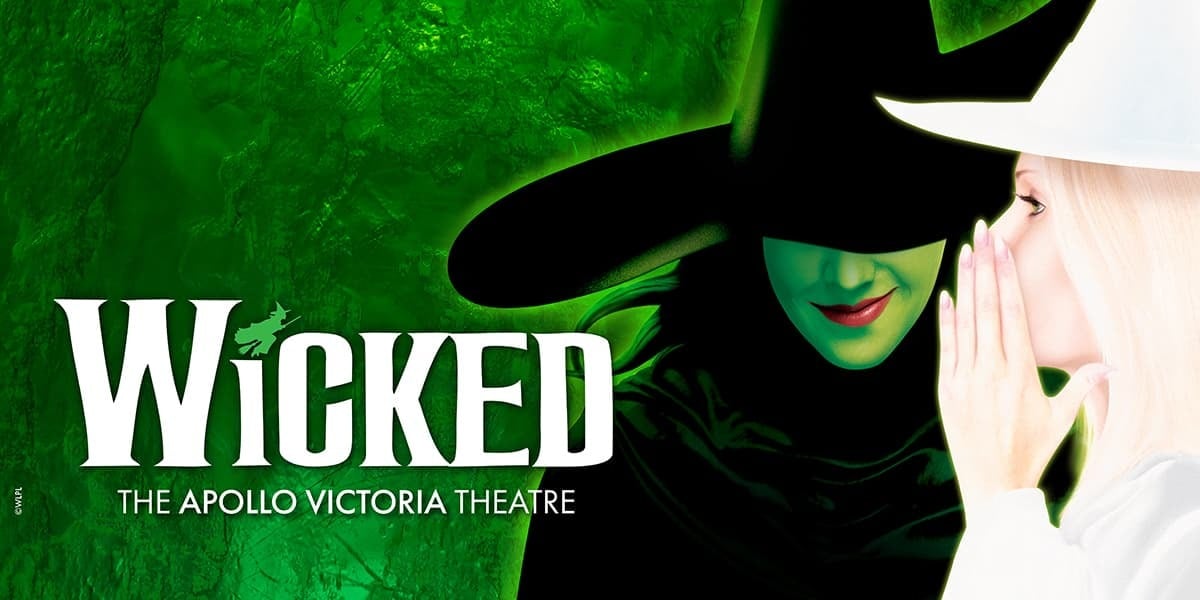Wicked: For Good vs Wicked the Musical: Key Differences Explained
Published on 24 November 2025
We break down the biggest differences between Wicked For Good and the Wicked stage musical. We explore how the film expands Oz with deeper backstories and fuller emotional beats. We dive into the meaning of the two new songs, “No Place Like Home” and “Girl in the Bubble.”
Fans of Wicked have waited a year to see how the two-part film adaptation expands the world of Oz, and Wicked For Good delivers a far deeper look at events than the stage musical - no shade, because seeing it live will always be the best way to experience the world of Oz, but there’s obviously only a certain amount that can fit into 2 hours and 45 minutes (including a 20-minute interval). And, trust us, if they ever extended the stage version to 5 hours with parts 1 and 2 we would 100% be here for it!
While the overarching story remains the same, the second film takes full advantage of cinematic scope to explore characters, settings, and emotional beats with more detail than the musical’s second act. Below, we break down the biggest differences — spoilers ahead!
A Fuller Conclusion for the Animals of Oz
One of the most striking changes in Wicked Part Two is the way the film gives the animals a more complete and satisfying resolution. The musical hints at their liberation, but the film takes the time to show what this looks like on screen with Glinda starting to fight for their rights at the end. Their return to speech and agency becomes a powerful thread rather than a footnote, grounding the political heart of the story in a way the stage show simply isn’t able to do in the timeframe.
We also learn that the iconic Yellow Brick Road was actually built through animal slave labour, and Elphaba gets a new song, “No Place Like Home,” urging the animals to stay and fight for a land that belongs to them too. Oh, and Dulcibear is back — yaaaaaas!
The Glinda–Fiyero Wedding Brought to Life
Where the musical only references Glinda and Fiyero’s engagement, the film allows the audience to witness the wedding in vivid detail. It’s lavish, intimate and heartbreaking, especially knowing what Glinda doesn’t. The scene adds emotional weight to Glinda’s storyline and gives a more three-dimensional look at her future role as Oz’s leader.
The wedding decor and dress are top tier, and the bird helping Glinda get ready was such a cute touch, but surely the best part were the parallel shots of Glinda walking down the aisle vs Elphaba simultaneously walking down the Wizard’s secret dungeon passageway, only to discover Dr Dillamond and hundreds of other animals caged up and unable to talk. This extended scene really heightens the Wizard’s deception after he appeased Elphaba by setting the monkeys free. It’s followed by the brilliantly chaotic scene where the animals escape and stampede through the wedding; in the commotion Fiyero is able to lock up the Wizard and flee with Elphaba.
A Deeper Wizard–Elphaba Confrontation
The film inserts an extended encounter between the Wizard and Elphaba, heightening the tension between them. In the musical he frees the monkeys but in the film Elphaba commands him to prove himself to her this time too.
We then launch into the song Wonderful, and beneath its jaunty melody, the song lays the Wizard’s hypocrisy bare—he downplays his lies, excuses his corruption, and flatters Elphaba in a bid to win her over. The song reveals how he relies on showmanship and charisma to cover both his deceit and his readiness to exploit others, exposing the darkness under Oz’s cheerful façade. Making Glinda part of the song in the film underscores how strongly the Wizard’s temptation resonates with her; especially given how much she’s driven by appearances.

Elphaba’s Forest Lair: A New Visual Spectacle
Not a massive change, but the film creates such a gorgeously atmospheric version of Elphaba’s forest hideout, giving it an almost sacred quality. The film also spends more time letting Fiyero show where his loyalties truly lie, making his choice to stand with Elphaba feel richer and more deliberate. And THAT LOOK Jonathan Bailey gives her during “As Long As You’re Mine” absolutely floored us. Swoon.
Girl in the Bubble
Glinda is much more fully fleshed out in the movie. Firstly, we get to see Madame Morrible gift Glinda with the bubble, and the accompanying wand to make it look like she operates it herself using magic, when we know Glinda has zero magical capabilities.
We even get a childhood flashback of Glinda receiving her first ever magic wand as a birthday present, and her disappointment with the fact that she doesn’t actually have magical powers but - even from an early age - realising how much appearances count for. Later in the film, we also get the brilliant new musical number “Girl in the Bubble,” which explores even more deeply how she can’t carry on lying and keeping her head in the clouds, but has to finally face reality and help do the right thing. Such a brilliant addition, we would love to see it live on stage, please.
Final Poignant Moments
Elphaba’s black hat becomes even more iconic in the film, symbolising identity, rebellion, and connection. The final beat — Glinda seeing the hat after Elphaba seemingly melts to death, and then Elphaba looking at the hat when she comes out of the trapdoor when the coast is clear. Seeing that moment from both of their perspectives is quietly devastating. The emotional clarity is sharper, deeper, and more intimate of their shared history of how that hat really brought them together. Weeps. Another standout addition is the time spent on Madame Morrible being taken away to prison but the monkeys on screen. It’s satisfying, dramatic, and we’re so here for it.
The Grimmerie
We also loved the, somewhat open-to-interpretation, scene when Elphie, while fleeing Oz, looks back, and then the Grimmerie opens for Glinda. We already know the ancient book of enchantments can only be opened by individuals with innate magical ability so does this mean a transference of power between the two besties, or did Elphaba open it for Glinda from afar to help signify to her that she’s still alive? Either way, the fact that this scene ends with a rainbow in the distance plays perfect homage to the song "Somewhere Over The Rainbow" in The Wizard of Oz film.
Recreation of the Musical’s Original Show Poster
The film closes with a quiet flashback to Elphaba and Glinda in a poppy field at Shiz — Glinda in white leaning in to whisper something in Elphie’s ear, perfectly recreating the iconic original show artwork. It’s a full-circle moment that sends you straight back to the beginning, and makes you want to experience the whole story all over again on stage.
Why the Stage Musical Still Wins
Visually, Wicked For Good is a showcase, turning moments that were once implied into full cinematic set-pieces. The world-building is extraordinary, but while Wicked Part Two expands the world of Oz with cinematic scale, nothing compares to experiencing Wicked live on stage.
The emotional charge of a full orchestra, the physical power of performers singing just metres away, and the electricity of a live audience create something film simply can’t replicate. As dazzling as the tulip fields, Yellow Brick Road sequences, and intimate close-ups are on screen, the magic hits differently — and more deeply — on stage at the Apollo Victoria Theatre.
Ariana Grande, Cynthia Erivo, and Jonathan Bailey are extraordinary, and the films add wonderful new layers to the story. But for us, and many others, Wicked belongs in the theatre. The thrill of Defying Gravity happening right in front of you, the immediacy of the storytelling, and the shared experience with a room full of people make the stage version unbeatable.
In the end, the films enrich Oz — but the musical remains the place where it truly comes alive. Book your Wicked tickets today.

By Hay Brunsdon
I've 15 years of writing and editorial experience, and starting working in the West End theatre industry in 2012. When not watching or writing about theatre I'm usually swimming, hiking, running, or training for triathlons in the Stroud valleys.

